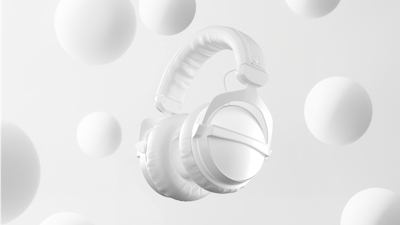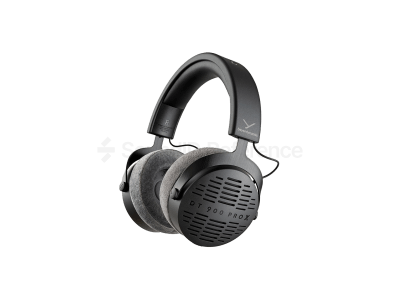Sennheiser HD 650 review – Long Live The King!
It’s hard to overstate the importance of the Sennheiser HD 650. For Sonarworks this headphone was used to translate a neutral sound from speakers to headphones. They’re also used by our engineering team as reference headphones, so they’re really special to us. Let’s find out whether you should get excited about them!
- Flattest headphones we've ever measured
- Great comfort
- Matched left and right channels
- Translate well among different users
- Aren’t too sensitive to positioning changes on one’s ears
Pros list with SoundID Reference calibration
- Sub bass extension greatly improved
- Deliver pretty much perfectly neutral sound to any listener
- Not the most durable headphones out there
- Weak Sub bass extension
They could definitely lack volume if plugged directly in your phone or a built-in headphone socket on your laptop, especially if you’re using them with Sonarworks calibration and “Safe headroom” enabled. But there’s no need to worry if you’re using an audio interface as any modern unit will drive them loud enough.

Sennheiser HD 650 are pretty much the most neutral headphones available on the market. However, their sub-bass response is lacking (frequencies below 100 Hz) and high-mids (around 2-5 kHz) need to be tweaked a bit. Otherwise, they are pretty much good to go straight out of the box.
You would expect from headphone manufacturers perfect matching between left and right drivers. Unfortunately, in the real world, this doesn’t happen too often – pretty much every other pair of headphones have channel inconsistencies even among the well established pro headphone brands. By contrast, Sennheiser is a true expert in offering headphones with matched left and right drivers so that soundstage stays consistent across the spectrum. With some minor exceptions, Sennheiser HD 650 has hardly any inconsistency between the two drivers. On a rare occasion, pairs have slight differences in bass and sub-bass region, but the magnitude is low enough to not cause audible issues with imaging.
Based on our experience with various headphone models, we would say that Sennheiser HD 650’s are very comfortable to wear. They are lightweight, fit very well almost any head size and shape and do not cause headaches by creating too much pressure on your ears and temples. Only the largest heads may find the clamping force of HD 650’s on the tight side, but keep in mind that with time the headband will become looser, so the comfort for those with larger heads should only increase over time. These headphones are a great choice for extensive mixing sessions.
While the asking price of €389/$400 can’t be considered low, these are the flattest-sounding headphones out of the box, while being far from the most expensive, so we’re not complaining! If we compare HD 650 to other headphones and forget about calibration for a minute, Sennheiser / Drop HD 58X and 6XX or Sennheiser HD 600 are very close to HD 650 performance straight out of the box, while all are more affordable. However, when used with Sonarworks calibration, Beyerdynamic DT 880 Pro offer a near-identical performance of calibrated HD 650 for about half the price.
These aren’t the cleanest headphones out there when it comes to distortion in the bass region, however, they hold up nicely with anything above 150Hz. While THD figures after calibration in the sub-bass region are high (on average about 10-15%), it’s mostly 2nd harmonic distortion, which means that it won’t be too audible and in most cases will go unnoticed even if you work with bass heavy music. Also, it’s worth keeping in mind that even with their THD figures these headphones will reproduce cleaner bass than many real world playback systems your work will be listened on. Should you absolutely require surgical precision under 100 Hz, get a pair of calibrated closed backs or orthodynamic headphones.
HD 650’s sound nearly the same no matter who is using them. Also, changes in wearing position don’t alter the frequency response much. The consistency of HD 650 is exceptional on all fronts!
How much do they differ pair to pair in terms of frequency response?Based on our experience, they do not differ a lot from pair to pair. There could be a slight difference in high and high-mid frequency perception, otherwise, they all sound very similar.
Rating
Conclusion
These are our all-time favorite headphones. Apart from the weak bass response, there isn’t much correction required to get them absolutely perfect! Once calibrated, we can’t recommend Sennheiser HD 650 enough to anyone looking for production / mixing / mastering studio headphones. Just keep in mind the inherent drawbacks of the open-back design headphones – there’s virtually no sound isolation from the outside world and sound will leak out of the headphones. If these aspects concern you opt for closed-backs, if not – go for it!
For more information about Sennheiser headphones, please read our other reviews – HD 560S, HD 200 Pro, HD 280 Pro, HD 300 Pro, and HD 600 S.
You can order individually calibrated Sennheiser HD 650 headphones from our store here.
Continue to discover our top recommended PRO studio headphones in our Top 30 list.
Final Rating
Calibration Enabled
Calibration





